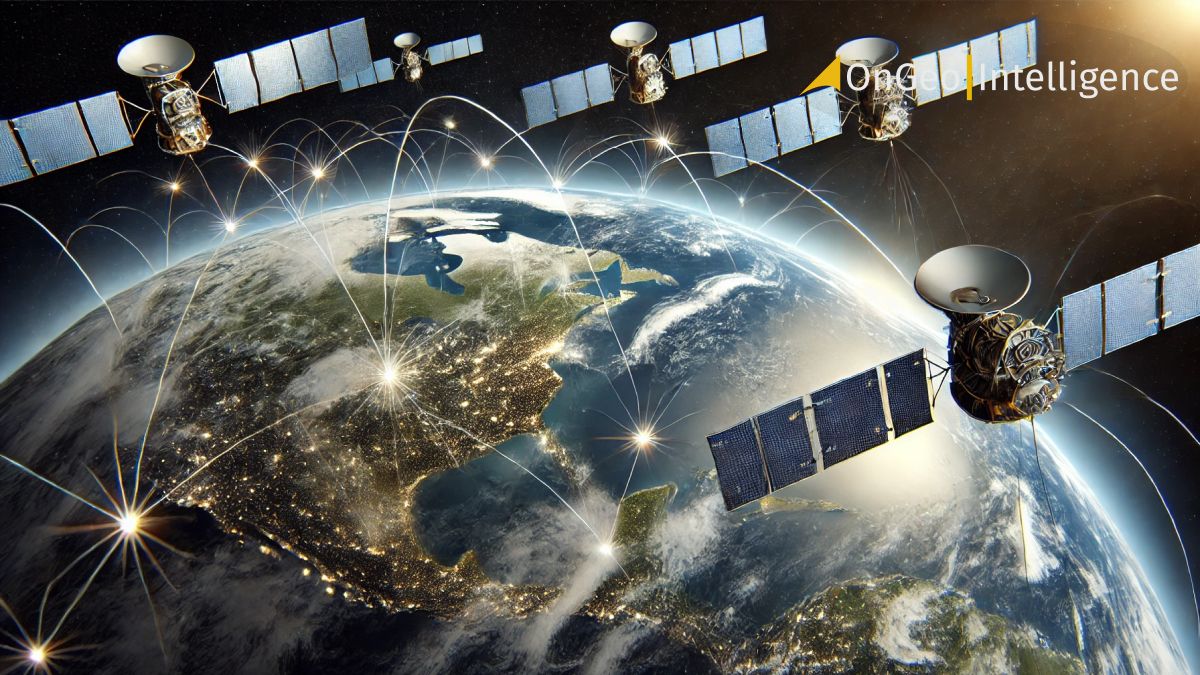Satellite constellations represent networks of satellites working together to simultaneously cover various regions of the Earth. Unlike single satellites, which provide coverage over limited areas, constellations ensure global reach and continuous monitoring. They are essential for a wide range of applications, from global internet services to weather monitoring and precise navigation.
High-Quality Satellite Imagery, Hassle-Free
Explore any location on Earth with precision. Order a detailed Satellite Imagery Report—no sign-ups, no contracts. Delivered in a clear PDF for instant insights.
Although both constellations and clusters refer to groups of satellites, they serve different purposes. A satellite constellation refers to a network of satellites on similar orbits that collaborate to achieve a common goal, such as global communication or Earth observation. These satellites are strategically positioned to avoid overlapping coverage and interference. On the other hand, a satellite cluster involves satellites flying in close proximity, often on the same orbit, to focus on a specific mission. For instance, optical and radar satellites may operate as a “team” to observe the same area of interest.
Benefits of satellite constellations:
- Global coverage: Satellite constellations ensure that vast regions of the Earth are covered, leaving no blind spots and maintaining continuous communication or observation.
- Cost-effective: Smaller satellites in large constellations are typically more affordable to launch and replace, offering a flexible, scalable solution compared to deploying a single large satellite.
- Redundancy & reliability: If one satellite in the constellation fails, others can seamlessly take over its responsibilities, ensuring uninterrupted service.
Types of satellite orbits:
Satellite constellations are typically categorized based on their orbits:
- LEO (Low Earth Orbit): Satellites in LEO operate at altitudes between 500 and 2,000 km, making them ideal for real-time data transfer due to low signal latency. Examples include SpaceX’s Starlink, OneWeb, and Iridium. LEO satellites are also commonly used in Earth observation.
- MEO (Medium Earth Orbit): Satellites in MEO orbit between 2,000 and 35,000 km. These are often used for global navigation systems (GNSS) such as GPS, Galileo, GLONASS, and BeiDou. Some communication constellations, like SES’s O3b mPOWER, also operate in MEO.
- GEO (Geostationary Earth Orbit): GEO satellites orbit at about 36,000 km and remain fixed over a single point on the Earth’s surface. While they offer extensive coverage with just a few satellites, they have higher latency compared to LEO systems. GEO satellites are commonly used in weather monitoring and global communication, such as those operated by Inmarsat.
Applications of satellite constellations:
- Earth Observation: Satellite constellations like Planet’s RapidEye, Airbus’ Pleiades Neo, and Maxar’s WorldView Legion specialize in monitoring the Earth’s surface. These LEO satellites provide high-resolution images crucial for climate tracking, disaster response, and agricultural management.
- Satellite Communication: With growing demand for global internet, constellations such as SpaceX’s Starlink and OneWeb aim to provide high-speed broadband to remote regions. Operating primarily in LEO, these systems minimize latency and improve connectivity.
- Global Navigation (GNSS): Systems like GPS and Galileo utilize MEO satellites to deliver accurate positioning, tracking, and timing. These constellations are essential for navigation in vehicles, airplanes, and even smartphones.
Impact on Earth Observation:
In the Earth observation (EO) market, constellations are game changers. They enable Persistent Change Monitoring (PCM), allowing for frequent monitoring of specific Areas of Interest (AOI). The larger the constellation, the more locations it can observe simultaneously, providing comprehensive insights into environmental changes, urban development, and more.
Conclusion
Satellite constellations are transforming the way we connect, navigate, and observe our planet. From supporting global internet access to monitoring the health of ecosystems, these networks of satellites are essential in creating a more connected, informed, and responsive world.















































